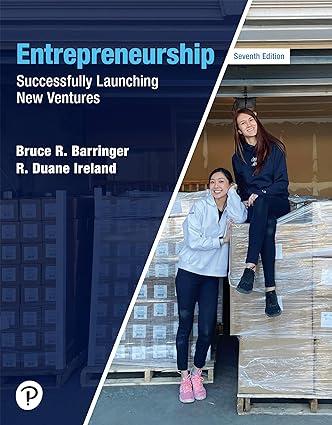Juicero designed, manufactured, and sold the Juicero Press, which was a Wi-Fi-enabled juicer to use with fruits
Question:
Juicero designed, manufactured, and sold the Juicero Press, which was a Wi-Fi-enabled juicer to use with fruits and vegetables. A juicer, also known as a juice extractor, is a kitchen appliance people use to extract juice from fruits and vegetables. To use a conventional juicer, you start by cutting up the fruits and/or vegetables you want to convert to juice. You feed the cut-up pieces into the top of the juicer, at which time the juicer separates the juice from the fiber. You are then left with a fresh fruit, vegetable, or combination fruit/vegetable drink that is pure juice without the pulp and fiber. The idea behind the Juicer Press was to make the process simpler. Rather than having to buy, clean, and cut up individual fruits and vegetables, the Juicero Press worked with premade bags of chopped-up fruit and vegetable pulp that the company sold via a subscription plan for between $5 and $7 per bag. The fruits and vegetables that the pulp came from were sourced locally and the bags lasted about eight days. Juicero offered a variety of selections such as pineapple, romaine, celery, cucumber, spinach, and more. Each bag had a QR code which the Internet-connected machine scanned and verified. If a bag had reached or was beyond its expiration date, people could not use it. Once a bag was dropped into the Juicero Press, it extracted the juice from the fruit and/or vegetable pulp, producing a fresh, healthy drink in the process of doing so. Pause for a moment and go to Google Images and type “Juicero” into the search bar so you can see the Juicero Press and the premade fruit/vegetable bags. Juicero’s sales pitch was that using a conventional juicer is too much work. By getting fruit or vegetable pulp in a premade bag, you avoid all the mess and hassle. Juicero was the juice equivalent of the popular Keurig coffee machine, which allows people to make a cup of coffee from a premade, single use package of ground coffee beans. For Juicero, the combination of the Juicero Press machine and the fruit/vegetable packs made for an ideal combination. The company would make money on selling the Juicero Press machine and then obtain a steady stream of income from every machine sold via sales of its fruit/vegetable packs.....
Discussion Questions:
1. For each of the three reasons that Juicero failed, describe how a well-written business plan backed up by a thorough feasibility analysis could anticipate the reason for failure.
2. Paul Graham, founder/manager of Y Combinator, a respected Silicon-Valley startup accelerator, says that the secret to startup success is to “Make Something That People Want.” To what degree do you think Juicero made something that people wanted?
3. Do you think Juicero had a written business plan? If not, what does the Juicero story teach us about the importance of having a well-researched plan?
4. Juicero’s failure has similarities to the failure of the Keurig Kold, an at-home soda machine, described in Chapter 3’s “What Went Wrong?” feature. For both the Juicero Press and its accompanying fruit pulp packs and the Keurig Kold, what do you think was the root cause of their failures? What is the takeaway of your conclusion for future entrepreneurs?
Step by Step Answer:

Entrepreneurship Successfully Launching New Ventures
ISBN: 9780138091828
7th Edition
Authors: Bruce R. Barringer, R Duane Ireland





